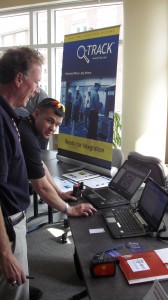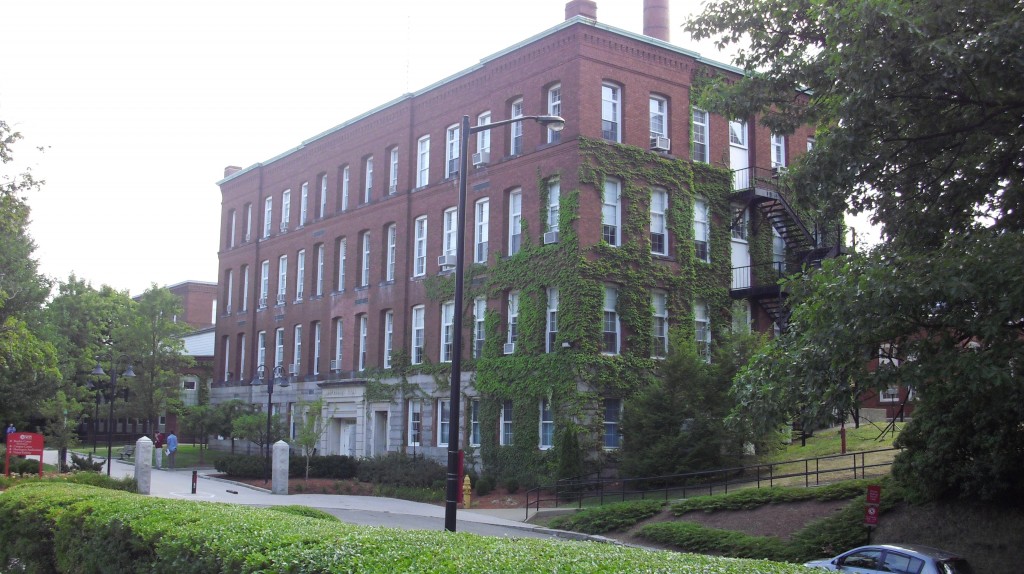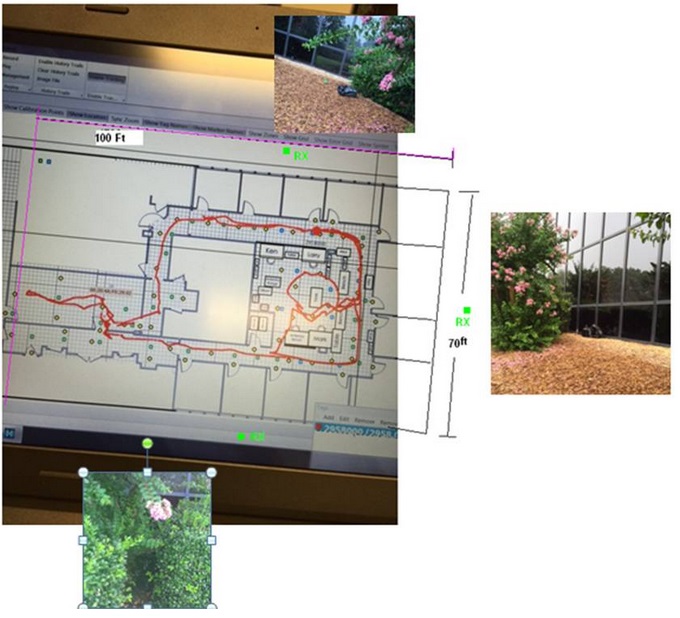
It was a busy couple of days at the 5th Annual Workshop “Precision Indoor Personnel Location and Tracking for Emergency Responders” at Worcester Polytechnic Institute in Worcester, MA. Q-Track (Facebook) unveiled our FLARE (Firefighter Location and Rescue Equipment) prototype system on Monday. Yesterday we participated in a realistic fire rescue exercise on the WPI campus with the Worcester Fire Department. Despite a GUI not fully mature, Q-Track’s FLARE system aided the Worcester FD team in making the fastest rescue of the day. But the workshop was more than just an opportunity for a realistic, real-world demonstration of firefighter location technologies.
Monday kicked off with some gripping stories of lost firefighters from Chief Billy Goldfeder, EFO, Deputy Chief, Loveland-Symmes FD, Ohio. His website, firefighterclosecalls.com (Facebook) is a great resource for up-to-date firefighter news and information. One of the great benefits of the WPI Workshop to me as an RF scientist and developer of real-time locating solutions was the opportunity to learn about the real world of the first responder. I had not appreciated, for instance, that in the most critical tracking situations, firefighters will usually be crawling with absolutely no visibility.
Q-Track unveiled our FLARE (Firefighter Location and Rescue Equipment) concept Monday morning. Locator-receivers are deployed around an incident scene. Firefighters or other emergency responders wear low-frequency (typically ~1MHz) Tag-transmitters. The wavelength is so long (300m) that the near-field extends out to nearly 100m or 300feet. By recording the near-field signal characteristics of the tagged firefighter, Q-Track’s FLARE creates a virtual RF lifeline to the location of a firefighter in trouble. An incident commander can vector a rescuer back along this path to the location of a firefighter who needs assistance.
There were too many fascinating presentations to do full justice to the workshop. A wide variety of other interesting technical presentations rounded out Monday’s program, concluding with a combined poster and demonstration session. In the demonstration session, the Q-Track team challenged visitors to hide a Tag-Transmitter. Then Q-Track personnel vectored each other to the location of the tag using the prototype FLARE system. We were able to find the tag each time, although a few of the searches took longer than we would have hoped.

On Tuesday morning, Worcester Fire Department personnel led by Deputy Fire Chief John Sullivan conducted a realistic rescue scenario inside Stratton Hall, a four story building on the WPI campus. In the simulation, a fire was raging in the top floor of the building. A team of firefighters entered the building from the reverse side to search the top floor. While their search was under way, the simulated fire became worse, and the Incident Commander (Chief Sullivan) ordered an evacuation. During the evacuation, one of the firefighters became disoriented and was “lost” in the building at a pre-arranged location unknown to either Q-Track or the rescue team. The goal of the exercise was for Q-Track’s FLARE prototype to help guide the rescuers to the “lost” firefighter.

Q-Track COO Steve Werner (who spearheaded the FLARE implementation effort), interpreted the FLARE GUI, aiding Chief Sullivan in guiding the rescue team. The rescue team made their way in the front side – opposite from the entry made by the initial team and one floor lower. Once the rescue team reached the second floor, the FLARE system was able to detect that the rescue team was on the path of the “lost” firefighter. With the aid of Q-Track’s FLARE system, a rescue that had required a baseline of about 24 minutes was completed in just over seven minutes. Although successful in the trial, the prototype needs more work to enable faster deployment, more robust operation, and a more intuitive GUI.

I’d like to personally thank our hosts at WPI and the Workshop Steering Committee Members for putting on such a helpful and informative meeting. The Worcester Fire Department worked hard to create a realistic rescue simulation, and I appreciate their efforts and the feedback they gave us. We at Q-Track will be taking the lessons we’ve learned and we will continue to work on improving the FLARE system as we can afford to spend time away from our funded projects. A video of the rescue operation and the full presentations will be available online soon. When they are, I will post a note.
Update: Boston Globe coverage. Ironically, their focus is on the parallel DHS funded efforts – neither of which were able to show off equipment, instead of on Q-Track and the two other teams who not only tested, but also succeeded in finding the “lost” firefighter. But at least the Worcester Telegram mentioned us all by name.



3 thoughts on “Q-Track’s Firefighter Location System Succeeds in Trial”